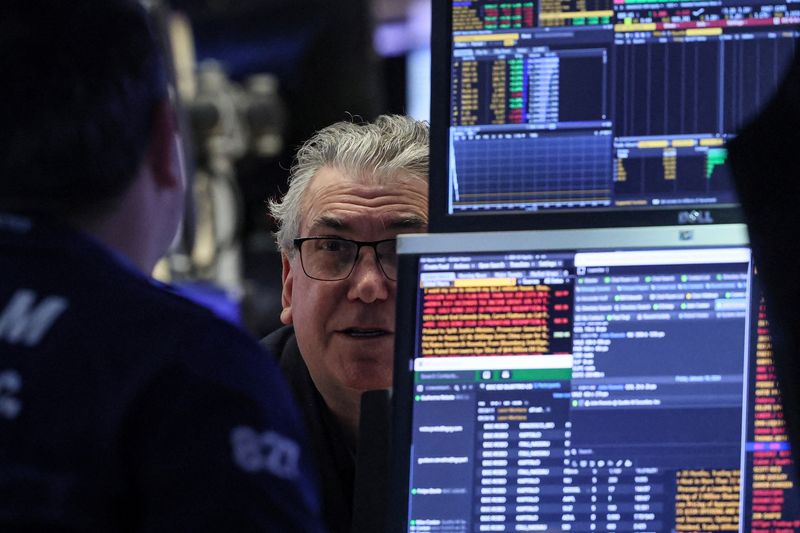By Suzanne McGee
(Reuters) - U.S. exchange-traded funds could face more obstacles to their runaway growth in 2025 after a bumper year saw the products take in a record $1.1 trillion in inflows in 2024.
The inflows were the most in the product's 35-year history and came close to doubling last year's figure of $597 billion.
Analysts attribute the popularity of the products to a combination of the bull market in the U.S., where the lion's share of ETFs is based, the advent of innovative cryptocurrency and options-based products and the growing preference by investors for lower-cost, liquid ETFs over mutual funds.
Now, while many believe ETFs will top 2024's records in 2025, they are cautiously eyeing a new set of challenges ranging from how to navigate an increasingly crowded ETF arena to the ever-present question of innovation.
"I find myself thinking that new product development may have outstripped investor interest in some of the most complex of these strategies," said Bryan Armour, ETF analyst at Morningstar. Not every product will 'land' with investors."
Indeed, one of Armour's projections for 2025 is that the market is likely to see a record number of ETFs closing down. While asset managers shuttered some 186 funds in 2024 -- 91% of which had less than $250 million in assets -- Armour expects that figure to soar next year above the record of 253 set in 2023.
"There has been so much product development, and a lot of ETFs won't survive to reach profitability simply because they don't have anything that's unique enough and appealing enough to pull in assets," Armour said.
According to Cerulli Research, 2023 was the first year that saw the average lifespan of an ETF decline, and by early 2024 it had already fallen below 5 years.
"Firms realize they have to be faster at closing down funds that don't attract assets and at redeploying their resources," said Matt Apkarian, associate director at Cerulli.
Still, industry insiders say there are many reasons to be bullish about an industry that globally jumped to $14 trillion in assets as of Dec. 27, from $11.6 trillion as of December 31, 2023, according to industry research and consulting firm ETFGI.
The number of new ETFs launched, including a dozen spot bitcoin products, reached 714 by the last full week of the year, said Matthew Bartolini, head of SPDR Americas Research at State Street (NYSE:STT) Global Advisors. That compares to 543 launches in 2023 and 480 in 2021.
The explosion in the number of ETFs can be traced in part to the surge in interest for products that use options to manage, limit or even accentuate risk. The proliferation of buffer and defined outcome ETFs, which use options to trade off upside potential for downside risk, or to hit a target return, is one of the biggest features of 2024.
"We'll be venturing into that market in the first quarter of 2025 with a buffered ETF product," said Brendan McCarthy, global head of ETF distribution and capital markets at Goldman Sachs Capital Management.

The two-year-old GraniteShares 2x Long Nvidia (NASDAQ:NVDA) ETF, which offers investors double the daily return on Nvidia, rose 177% in 2024, attracting more than $3.5 billion in new assets during the year to bring total assets to nearly $6 billion.
"There's no reason to think that $1 trillion isn't the new normal for inflows," said David Mann, global head of ETF product and capital markets at Franklin Templeton, who is marking his 22nd year developing new exchange-traded funds. "This has been a one-way train ride, and now the train is on the express track."